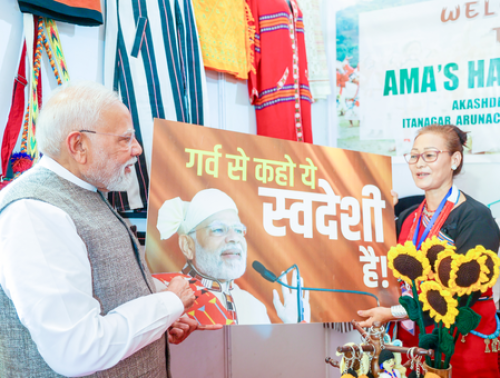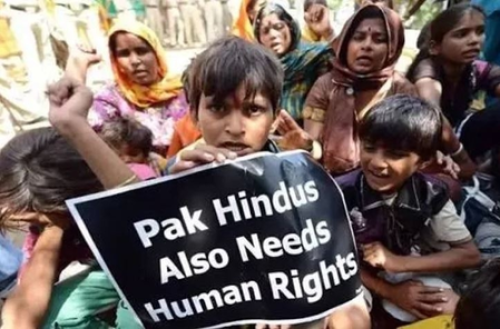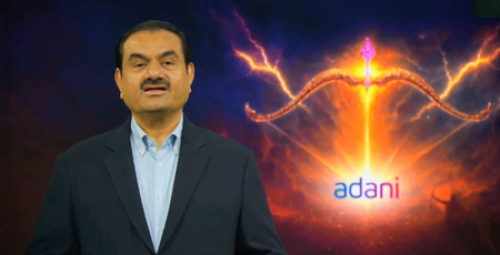Edited by Prashant Shah
Palki Sharma’s notion of “This is New India” seems rooted in a narrative of rising self-confidence, renewed agency, and a reassertion of India’s position both globally and domestically. She often frames India’s growth not just in economic metrics but in how its citizens see themselves, how its institutions perform, and how its voice commands respect on international platforms. “New India” for her isn’t only what has changed materially — new infrastructure, technology, trade, diplomacy — but also a transformation in mindset: a population no longer passively waiting, nor apologetic about its past, but assertive, assertive about its rights, identity, and potential.
In her work, Palki emphasizes India’s economic resurgence. She points to how India has shifted from scarcity to being counted among global growth leaders. Rather than merely highlighting GDP figures, she often draws attention to India taking part in international debates as an equal, in challenging narratives about itself, in seeking to correct misperceptions. For her, “New India” is one that is no longer defined by deficit, dependence, or external validation, but by its capacity to set its own terms.
Another dimension of her “New India” story is national pride combined with critical evaluation. She does not shy away from acknowledging failures or shortcomings — whether in social metrics, infrastructure gaps, or governance issues — but these are largely framed as contradictions to what India claims to be or what it aspires to be. The message is often: yes, we have these problems, but they should no longer define us because we are trying, and in some domains succeeding, to leap ahead.
She also stresses the idea of narrative control. “New India” in Palki’s usage often means India telling its own story, pushing back against what she sees as foreign media’s biases, misrepresentations, or simplistic portrayals. This includes countering criticism with context, insisting on seeing multiple perspectives, and refusing to accept that India is only a subject of scrutiny — India is also a contributor, an actor with interests, capabilities, and strategic significance. Thus, “New India” is about being heard, being respected, being understood on its own terms.
Another consistent theme is reform and institution-building. Palki often talks about changes in policy (e.g. “Make in India”, diplomatic outreach, trade negotiations, climate commitments) as benchmarks of this “newness.” The idea is not just change for optics, or symbolic announcements, but systemic shifts: in manufacturing capacity, infrastructure, academic research, healthcare, or regulatory frameworks. She seems to believe that these structural changes are the backbone of making India more self-reliant, more competitive, more resilient.
She also often addresses the juxtaposition of tradition and modernization. For her, “New India” is not rejecting India’s past or cultural heritage; instead, it's about carrying the heritage forward while adapting to modern demands, global standards, aspirations of youth, and changing demographics. She highlights how millions of Indians are navigating the tension between preserving identity (linguistic, religious, cultural) and embracing modernity (technology, mobility, innovation). In her view, this synthesis is part of what distinguishes the new from the old.
Her tone is usually both celebratory and demanding. She celebrates victories — space missions, diplomatic wins, infrastructure projects, economic indices — but she also demands accountability, transparency, better performance, and more inclusive growth. In doing this, she seems to want her audience to feel both pride in what India is becoming and alert to what still needs fixing. She seems to imagine an India for everyone — not only urban elites — and so “New India” also means addressing regional inequalities, rural development, gender equity, social justice.
“New India,” in her perspective, is also global in orientation. It’s about engaging with the world not just as a passive receptor of foreign ideas or a beneficiary of foreign aid, but as an influencer: shaping global norms, contributing to climate action, participating in multilateral institutions, asserting sovereignty. She sees India’s foreign policy, trade strategy, and cultural diplomacy as parts of that reassertion. For example, she often points out India’s increasing role in the Global South, how it is viewed among other emerging economies, and how its soft power (diaspora, culture, tech) is now more noticeable.
Yet, Palki’s “New India” is not without tension. She often surfaces the contradictions: claims of development alongside persistent poverty; political empowerment alongside issues of free speech or minority rights; infrastructural progress alongside environmental degradation or regulatory gaps. She doesn’t dismiss criticism; rather she treats it as part of the necessary discourse of a democracy. For her, “New India” isn’t about pretending problems don’t exist, but about refusing that they become the defining narrative.
In sum, Palki Sharma’s perspective on “This is New India” can be summarized as a story of transformation — economic, social, diplomatic — combined with a reorientation of India’s identity: more confident, more assertive, more autonomous. It’s about narrative agency, institutional reforms, cultural self-respect, global engagement. It is aspirational, but not utopian; critical but not defeatist; proud but not unreflective.













